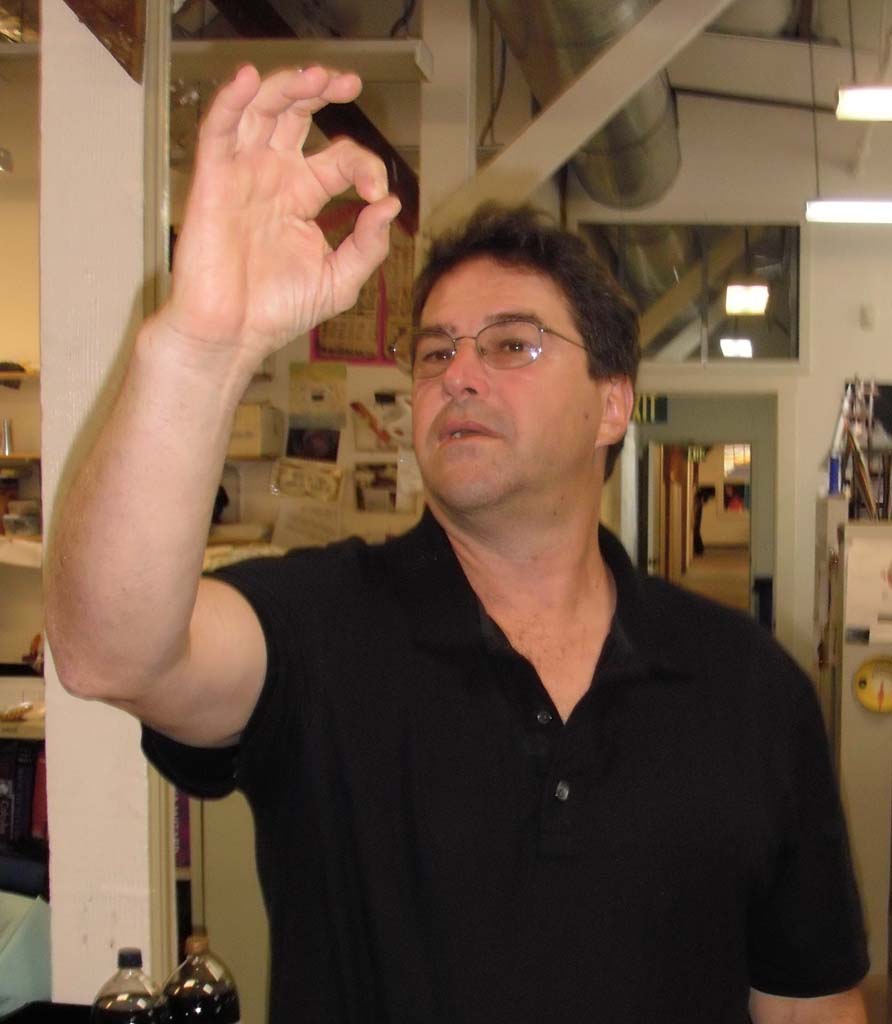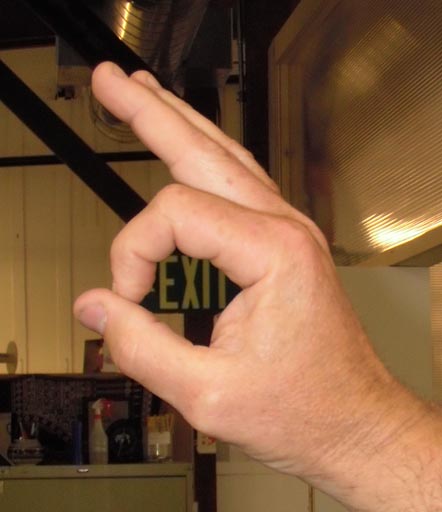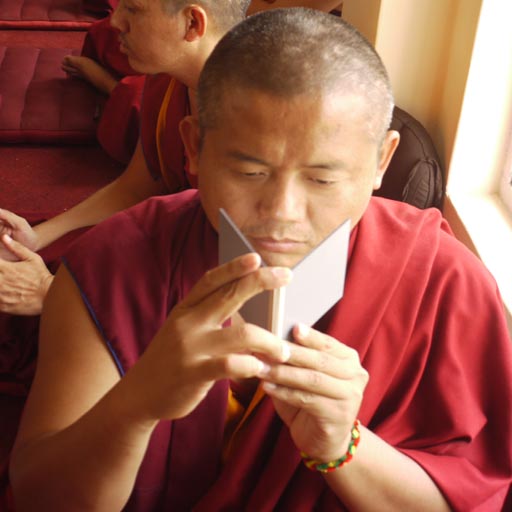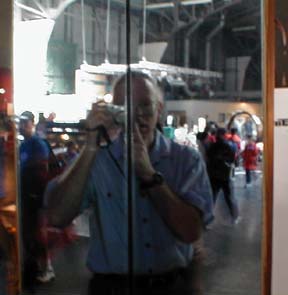The eyes have it

Point at a distant object with both eyes opened then close one eye to find your dominant eye.
The eyes have it

Point at a distant object with both eyes opened then close one eye to find your dominant eye.
Introduction
To perceive three dimensions, information from two eyes is important. However, for many people the information coming from one eye is given priority. This eye is then called their dominant eye. These tests will allow you to determine if you have a dominant eye, and, if so, which eye it is.
Material
Part 1, the pointing method, no materials are needed.(Variation, the circle method)
Part 2 Mirror method
Two mirrors about 4 inches square, get plastic mirrors at a plastic store.
Assembly
Part 2, the two mirror method
Mount two mirrors at a 90 degree angle.
See the Snack "Corner Reflector"
To Do and Notice
Part 1. The pointing method
Stretch one arm in front of you and point at a distant object.
(Note, People who do not have a dominant eye often have a hard time pointing because they see two fingers. )
Close your right eye, Don't move your finger.
Did your finger appear to "jump" where it was pointing when you closed your eye?
Open both eyes and point again.
This time close your left eye. (See image at top)
If when you close an eye, the finger appears to jump in relation to the background, then the eye you closed is your dominant eye.
Repeat the above activities using the other arm to point, see if you get the same answer for your dominant eye.
If you do, this is strong indication that you have a dominant eye.
Alternate pointing method. Make a circle with your index finger and thumb (the clasic OK sign in America.)


Hold your hand out as far as possible and circle a distant object, keep the object in the circle and bring your hand toward your face. If you have a dominant eye the circle will end up in front of that eye. To make sure you have a dominant eye, try the experiment with your other hand. If you get a different answer using different hands use the mirror method instead.
Now try a second method.
Part 2. The mirror method
Look into two mirrors mounted at a right angle. Look into them as if they were a book, that is with the line between the two mirrors running up and down.

You should see your face as you've never seen it before.
If the mirrors are accurately mounted, with a 90 degree angle between them, you will see yourself with only two eyes, otherwise, if the mirrors are not at 90 degrees then you may see three eyes or one eye. Adjust the mirror until you see two eyes.
Wink one eye.
Surprise!
This is your face as others see it, not the one you usually see in a
mirror.
That is why the eye you see winking is the opposite one from the eye
you would see in a single flat mirror.
What do you see?
If you see the line dividing the two mirrors pass through one of your eyes. Then that is your dominant eye.

Caution! Hold a finger under the eye that the line passes through, since the image of your face you are seeing is reversed from the usual mirror view, if you just look at the eye without touching your face with a finger you may get the wrong answer.
Close the eye the line goes through. The line will immediately jump to the other eye. Open both eyes. Does the line jump back? If the line jumps back you have a strong dominant eye, if not, then you have a weakly dominant eye.
If the line does not go through one eye, but instead you see lines through both eyes, then you do not have a strong dominant eye.
Some people see one line running through their face exactly halfway between their eyes, they have balanced vision with no dominant eye.
Others see a single line running through their face not exactly centered, they have a slightly dominant eye, the eye that the line passes nearer.
Questions to start inquiry
You can do other experiments too. What fraction of people are right eyed or left eyed. Is the dominant eye coupled to left-or right handedness? Is the dominant eye the eye with better vision?
What's Going On?
Our three dimensional view of the world is synthesized in our brains using information from our eyes. The images on the retinas of our two eyes are different, the differences provide strong clues to the locations of objects in three dimensions. When you point at an object using both eyes, and then alternately close one eye, then the other, the finger will seem to jump. This is because the image of the finger in one eye obscures a different part of the background than the image of the finger in the other eye. Taken together these two different images show us one nearby finger and a more distant background.
Many people give more importance to the image from one eye than to the image from the other, these people are said to have a dominant eye. The dominant eye seems to be unconnected to left-or-right handedness and even to which eye is currently the "best" in terms of clarity of vision.
There is a spectrum of dominance ranging from both eyes being balanced to one eye being completely dominant. The mirror test is the best for telling you just how strong your dominant eye is. If you see two eyes with lines through them then you have balanced vision. On the other hand if you clearly see one eye with a line through it, that eye is a dominant eye.
When a flashlight or laser is shone onto two right angle mirrors the light always exits parallel to the incoming beam. (If the light beam is in a plane perpendicular to both mirrors.) This is why a single eye will see the light scattered from itself returned to itself from the junction between the two mirrors, that is, each eye will see itself centered in the crack between the two mirrors.
Etc
Just like people are right-handed or left-handed they can be right-eyed or left-eyed.
When you look through a microscope or telescope, use your dominant eye. This makes it easier to ignore the image made by your slave eye. This will allow you to keep your slave eye open while you look through the eyepiece, saving you strain on the muscles which close your eye.
So What?
Hunters and target shooters will find it easier to use their dominant eye when aiming.
|
Scientific Explorations with Paul Doherty |
|
6 June 2011 |